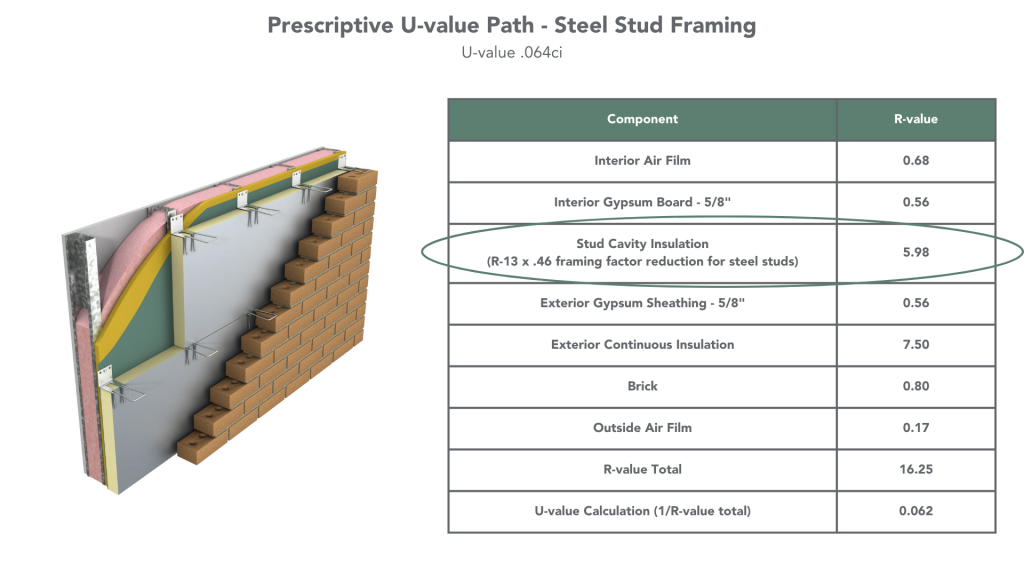Navigating insulation codes

By Hunter Panels.
Understanding building codes is key to efficient design.
While insulation might seem like a straightforward part of the building process. With us here at Hunter Panels, explore the nuances of these prescriptive methods to ensure your projects meet the latest energy codes with precision.
R-value prescriptive path
Complying with the R-value method is straightforward – simply use products with R-values that meet or exceed the values shown in the IECC for the appropriate climate zone and wall type. For example, the prescriptive R-value for metal framed walls in most climate zones (Zone 3 and above) is R-13 + 7.5 ci. This means the wall must incorporate insulation of R-13 or greater within the stud cavity, and insulation of R-7.5 or greater as continuous insulation, as shown in the following illustration:

U-value prescriptive path
The U-value method is different. It takes the thermal resistance of all the components of the wall assembly into consideration, not just the insulation. The R-values of the wall assembly components are added together. Since U-value is the reciprocal of R-value, the U-value of the assembly is determined by dividing 1 by the total R-value. There are tables within the code documents that assign R-values to certain components of wall assemblies such as cavity air spaces and interior air film.
The U-value calculation will be slightly different for framed walls depending on whether the framing members are steel or wood. Since steel conducts heat, there is a reduction in effectiveness of the stud cavity insulation within a steel framed wall assembly — in other words, the effective R-value of the wall assembly is less than the insulation’s stated R-value. This is not any fault of the insulation, rather it is because the steel framing is a thermal short circuit in the wall. Therefore, the energy efficiency of the stud cavity insulation is reduced by a “framing factor” percentage found in the IECC. In the below example, the reduction is 54% for steel framed walls 16″ oc, meaning the R-value of the insulation is multiplied by .46 (1 – 0.54).

Wood framing provides some measure of insulating value, so it is treated differently than steel framing when calculating U-value for the wall assembly. The most common way to calculate wood framing U-value is the “parallel path” method, whereby the U-values for the framing path and the cavity path are calculated and then added. So, if the wood studs are 16″ oc, the code calls for using a framing factor of 0.25 (meaning the studs take up 25% of the wall area). The U-value of the framing path is then multiplied by 0.25 and the U-value of the cavity path is multiplied by 0.75 to account for the remainder of the wall assembly. The U-value of the total wall is the sum of the framing path U-value and the cavity path U-value.

Navigating insulation codes requires a careful understanding of both R-value and U-value methods to ensure compliance and optimize performance. While the R-value path simplifies adherence to energy codes by focusing on insulation values, the U-value approach provides a more comprehensive assessment by considering the entire wall assembly, including framing effects. At Hunter Panels, we are dedicated to assisting you in navigating these complexities and choosing the right insulation strategies to adhere to current energy standards.
Original article source: Hunter Panels
Learn more about Hunter Panels in their Coffee Shop Directory or visit www.hunterpanels.com.























Comments
Leave a Reply
Have an account? Login to leave a comment!
Sign In